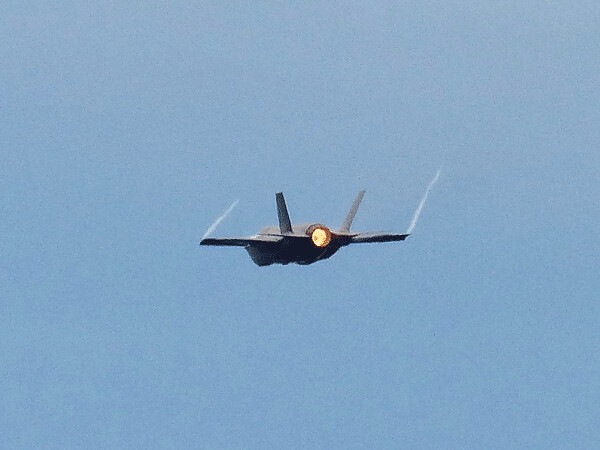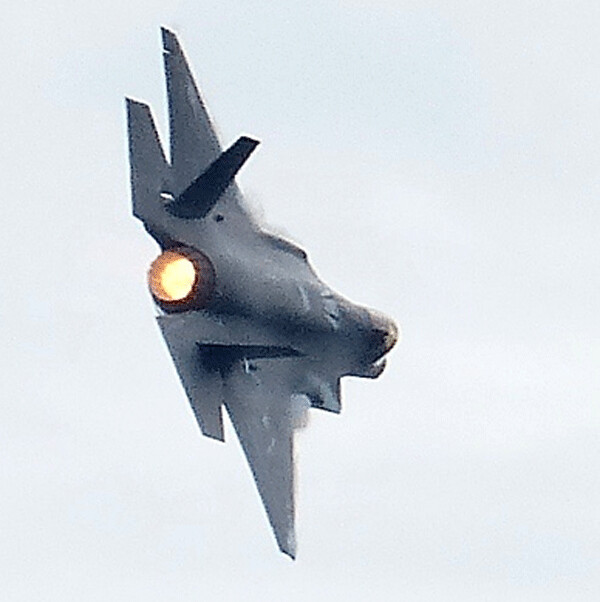Hard to Choose Between Diving Jets and Diving Eagle
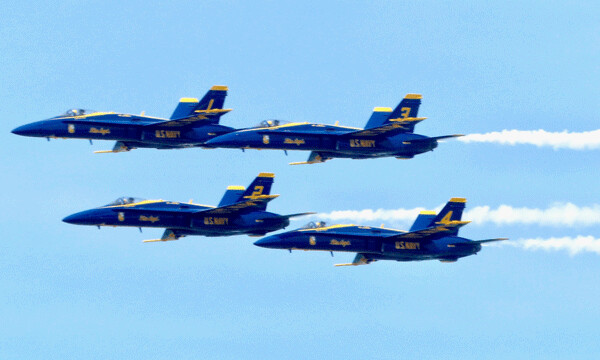
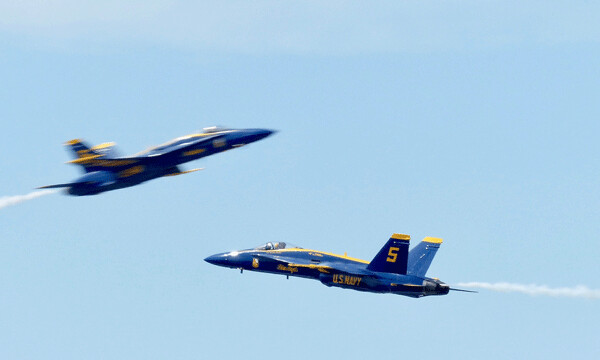
Doing some nature studying in Northern Minnesota can easily pass for a sports attraction, and especially last weekend, when we got an incredibly similar “split doubleheader” that started with watching the Navy Blue Angels and the Air Force F-35 Lightning II conduct their precision maneuvers in the Duluth International Air Show. The next day, as luck would have it, we visited friends at Big Sandy Lake near McGregor and saw the real-live equivalent of that Air Show in the wild.
There were a number of excellent preliminary routines at the Air Show, but the big crowd was waiting patiently for the featured Blue Angels, the U.S. Navy’s long-standing flying group, with their six Navy blue F-18 fighter jets executing their always-impressive routine. Everyone probably has a favorite trick, but I have always been a fighter plane fanatic, and all of them were exceptional to me.
It’s neat when the two planes break away from the four others, and do some close-order passes and abrupt turns, and suddenly the main four come roaring over the Monaco Air building and completely startle you. Also, when they fly over in formation, then suddenly veer straight up, still in tight formation, and at the peak of their climb, they all peel off in different directions — leaving vapor trails that resemble an instant-blooming flower.
We were marveling at the technology that allows those ultra-modern planes to pull off sudden maneuvers like that. But even they were upstaged by one of the preliminary routines — the ultra-ultra-modern, or futuristic F35 Lightning II. Flying alone, this plane makes you question your own senses. It can go well over the speed of sound, and it seemed almost invisible with its flat gray color. But it also can stop and turn almost at 90 degrees, and can even slow down to a near-hovering speed, or fly slowly enough to pace a World War II P51 Mustang propellor fighter.
The Lightning II blew my mind by diving into a low pass and then rising immediately, creating its own vapor trails as the afterburner kicks in for full thrust. The immediate turning ability of the plane, and its pilot, provided a challenge for the Blue Angels, in my mind.
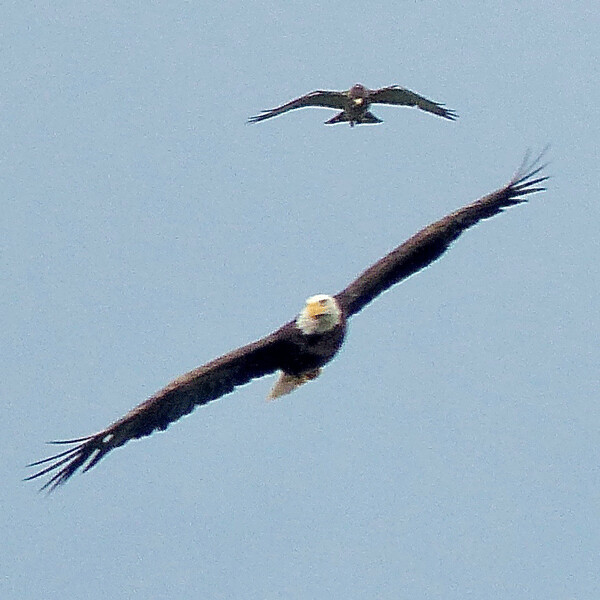
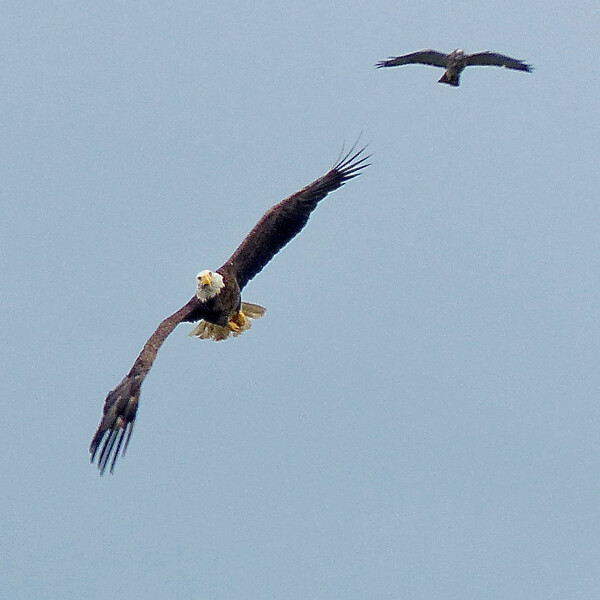
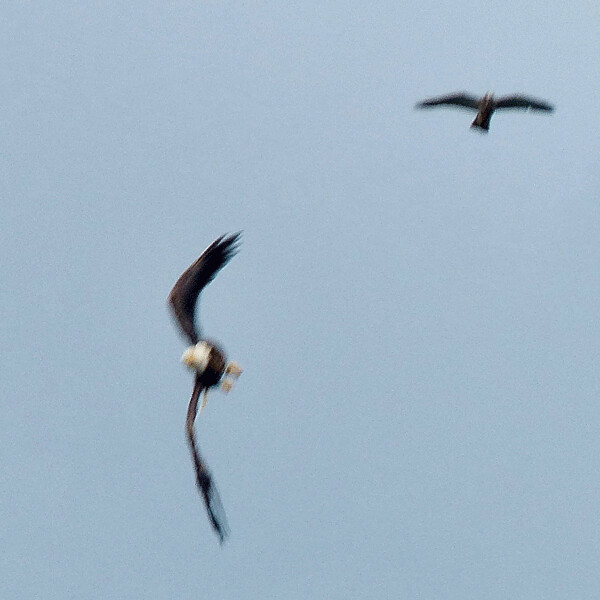
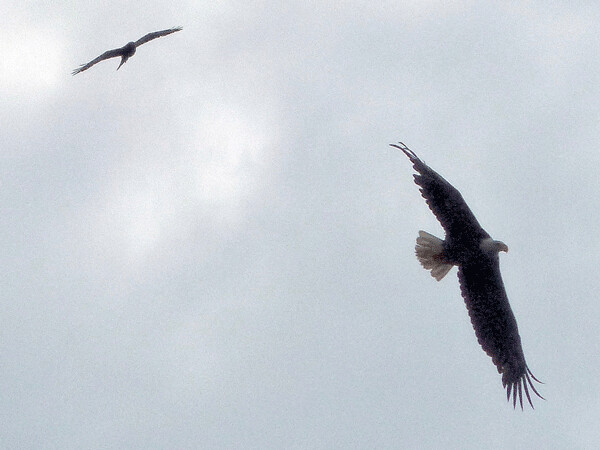
Thoroughly entertained, we set out for McGregor the next day, and after a relaxing afternoon at our friends cabin, we were invited out for a pontoon boat ride. We spotted a loon, and a few other birds, like hawks and vultures on shore. And then we spotted a pair of bald eagles, which must have been nesting nearby. Later, we saw one of the eagles, cruising the shoreline. Suddenly, an osprey came diving out of the sky and attacked the much larger eagle. The two birds put on an amazing display, with the smaller but quicker osprey, which may have had a nest nearby, tormenting the huge eagle.
But the eagle also was quick, and made a couple of sudden dives to elude its pursuer. At one point, the eagle was diving toward the water, then suddenly turned abruptly, its wings almost vertical.
The comparison was unmistakeable. The eagle put on a display of precision flying that was strikingly similar to the Blue Angels, and even more to the F35. While we wondered how any engineer could design an aircraft to do such precise maneuvers, we had to wonder if maybe those engineers found themselves watching hawks and eagles and ospreys do their real-life maneuvers, just for inspiration.
As for the entertainment value, I would not be able to choose between the high-tech aircraft and the low-tech creatures from Mother Nature. Both shows were spectacular.
